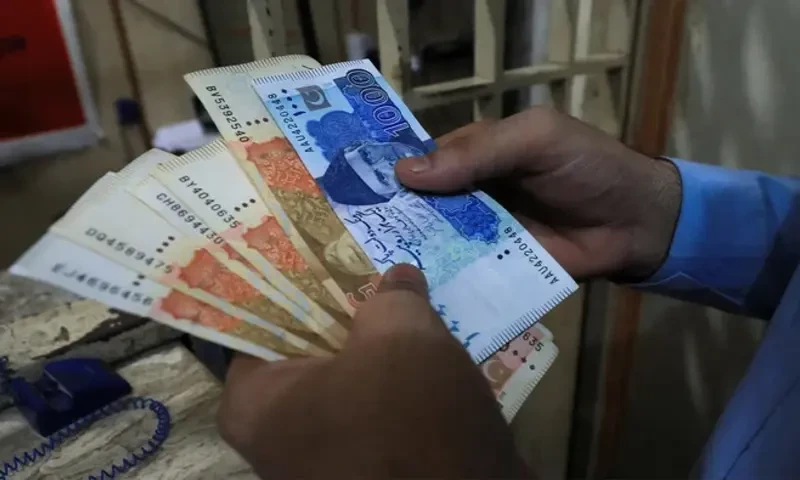According to analysts, the federal government’s escalating spending requirements, driven by various factors such as infrastructure projects and social programs, have compelled it to resort to borrowing money from scheduled banks to meet its financial obligations and sustain its operations.

During the first nine months of fiscal year FY24, Karachi witnessed a notable surge in the federal government’s budgetary borrowing from scheduled banks, reaching a historic high of Rs 4.8 trillion. State Bank of Pakistan (SBP) data indicates a substantial 138 percent increase, amounting to Rs 2.809 trillion, in the federal government’s borrowing for budgetary support to address the fiscal deficit.
In contrast to the previous fiscal year (FY23), where the federal government borrowed Rs 2.033 trillion from scheduled banks during the same period, FY24 saw a significant rise with Rs 4.842 trillion borrowed from July to March.
Analysts attribute this surge in borrowing to the federal government’s escalating spending needs. This necessity arose due to various factors, including infrastructure projects and social programs. Moreover, as part of the IMF Stand-By Arrangement (SBA) program, the government is committed to limiting its borrowing from the SBP.
Draw 98, Rs. 750 Prize Bond Full List, HYDERABAD
An in-depth analysis reveals that rather than solely borrowing, the federal government also made substantial repayments to the SBP, reducing its previous debt burden. During the first nine months of FY24, the government repaid Rs 332.7 billion to the SBP, contrasting with borrowing Rs 828.6 billion in the corresponding period of FY23.

Interestingly, the provincial governments demonstrated better financial health compared to the federal government, collectively repaying Rs 315.4 billion to the SBP. Notable repayments include Balochistan’s Rs 68.7 billion, Khyber Pakhtunkhwa’s Rs 40.5 billion, Sindh’s Rs 41.8 billion, and Punjab’s Rs 164.22 billion during July-March of FY24.
Additionally, the AJK and Gilgit-Baltistan Governments retired Rs 17.7 billion and Rs 1.1 billion, respectively, during this period. The federal government’s continuous borrowing reflects its ongoing struggle with a deepening fiscal deficit, leading it to rely heavily on domestic banking sources.

Looking ahead, the federal government plans to raise approximately Rs 5 trillion in the final quarter (April-June) of FY24 through treasury bills and bonds auctions to cover its budget deficit. This includes Rs 2.49 trillion from commercial banks through long-term security papers and Rs 2.475 trillion via MTB auctions.










